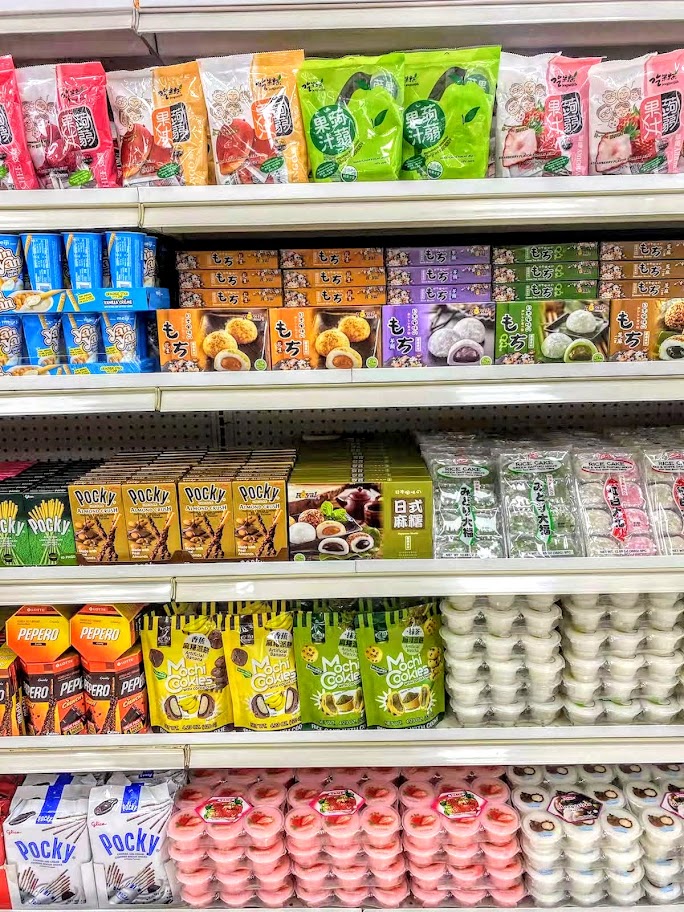Welcome to the Wondrous World of Asian Food Supermarkets!
Hello there, adventurous parents! Are you ready to embark on a delightful culinary journey with your little ones? Today, we’re voyaging into the vibrant and flavor-packed aisles of your local Asian food supermarket. Not only will this be a shopping trip, but it will also be a fun, educational excursion with plenty of tasty treasures to discover! ?
Introducing Your Family to Asian Cuisine
Asian food markets are treasure troves of culinary delights, showcasing an array of products from various countries such as China, Japan, Korea, Thailand, Vietnam, and more. By introducing your kiddos to these new flavors, you’re opening their minds to a diverse world of food options. So, let’s start with some helpful tips to make your experience both enjoyable and fruitful!
Tip #1: Plan Ahead for a Smooth Experience
- Create a List & Goals: Before stepping foot in the supermarket, it’s great to have a list of items you need. Also, set some goals like finding ingredients for a particular dish or exploring snacks from a specific country.
- Meal Prep: Plan some meals around the ingredients you know you’ll find at the Asian market. This can be a fun way to learn new recipes together as a family. Research and bookmark some kid-friendly recipes that everyone can help with – your little sous-chefs will love being involved!
Tip #2: Engage Your Kids with Interactive Learning
- Cultural Exploration: Each aisle in an Asian food supermarket offers a peek into different cultures. Use this opportunity to teach your children about the countries these foods come from. It’s a practical geography lesson rolled into your shopping routine!
- Colorful Produce: Encourage your kids to pick out one new fruit or vegetable to try. Maybe it’s the star fruit, lychee, or bok choy. These are not only healthy but also fun to explore and taste test at home.
Tip #3: Finding Healthy and Kid-Friendly Options
- Check for Freshness: Look for fresh vegetables and fruits, meats, and seafood. A good Asian market will have a variety and abundance of fresh produce that might not be available at your local grocery store.
- Navigating Snacks & Sweets: It’s easy to get carried away with the unique snacks and sweets, but keep an eye on nutrition labels. Balance is key, so find some healthier snack alternatives like rice crackers or seaweed snacks.
Shopping with your kids at an Asian food supermarket isn’t just about grabbing groceries; it’s about immersing yourselves in new tastes and cultures. Alongside finding the ingredients for tonight’s dinner, you’re also gathering slices of global heritage and delicious memories to cherish.
Stay tuned as we dive deeper in the next section, where we’ll explore specific sections of the store, learn some food label reading skills, and share more tips on involving your children in this exhilarating food adventure! ??
Remember, every item on the shelf has a story, and with this guide, you’re well on your way to making those stories part of your family’s dining narrative. Isn’t it exciting to think that your next favorite family dish is waiting just around the corner in the noodle aisle or perhaps beside the kimchi jars? Let’s find out together! Next up, we’ll look at how to decipher those intriguing labels and discover some seriously delicious, kid-approved Asian dishes that you can cook up in your own kitchen.

5 Things Parents Should Know When Preparing for an Asian Food Supermarket Trip
1. Educate Yourself and Your Kids on Asian Cuisine
Before hitting the supermarket, why not dive into a little research on Asian cuisine with your kids? From sushi to kimchi, familiarizing yourselves with the culinary staples can make the shopping trip more exciting and meaningful. Find picture books or online resources to make it a visual and interactive learning experience.
2. Allergy Awareness and Dietary Considerations
Asian cuisine, while delicious, can contain common allergens like nuts, shellfish, and soy. If there are food sensitivities or allergies in your family, prepare by learning how these items might be used in Asian cooking. It’s essential to read labels and, when in doubt, ask store staff for guidance.
3. Budgeting for Your Shopping Adventure
Asian food markets offer a wide range of products that can vary greatly in price. Set a budget with your kids, teaching them about money management, while deciding which items are must-haves versus nice-to-haves. Look out for deals and consider bulk buying for non-perishable items.
4. Making a List of Pantry Staples
Pantry staples in an Asian kitchen might differ from your regular list. Items like rice, noodles, soy sauce, sesame oil, and spices are essentials for many Asian dishes. Involve your kids in making this list so they can learn about the foundational ingredients that bring Asian cuisine to life.
5. Encouraging Exploration and Open-mindedness
Approach your supermarket visit with a sense of adventure! Encourage your kids to express curiosity and ask questions. Let them choose an exotic ingredient they’ve never tried before. Promoting open-mindedness towards new foods can lead to a lifelong appreciation for diverse cuisines.
What to Expect Aisle by Aisle
As you navigate every colorful corner of the Asian food supermarket, here’s a primer on what you can expect:
- The Dry Goods Aisle: Here you’ll find a variety of noodles, rice, grains, and seaweeds. Engage in a mini-lesson about how noodles can come in different shapes and textures compared to traditional Western pasta.
- The Condiments Section: A treasure trove of sauces and seasonings awaits! Soy sauce, hoisin, oyster sauce, and a selection of oils can elevate your cooking. Kids will be intrigued by the new flavors and learning the history behind them can be quite the treat!
- Snack Aisle: Delight in the vibrant packaging and unfamiliar treats. Balance indulgence with health by looking for snacks without artificial colorings and flavors.
- The Fresh Produce Area: Marvel at the exotic fruits and vegetables. A hands-on learning session on these lesser-known food items can be an exciting biology lesson!
- The Seafood Section: This area might feature live fish and seafood you might not see at local grocers. Discuss sustainable fishing practices to add an environmental angle to the tour.
With these aisles demystified, you and your little ones are set for a fun, educational, and delicious outing. Don’t forget to let your children lead sometimes—allow them to guide you to what catches their eye or piques their interest. This engagement ensures the experience remains memorable for them, and, who knows, you might just find a new family favorite thanks to their unique tastes.
Now, with your shopping bags filled with delightful finds and your heart full of family bonding memories, it’s time to head home and bring those new ingredients into your culinary carousel. Imagine the joy as you watch your children’s faces light up with each new taste and texture they’ve helped to choose. The world really is a beautiful melting pot, and there’s no better way to celebrate it than through the shared love of food. Happy exploring, dear parents!
For more great articles please see here. For more information see here
Disclaimer
The articles available via our website provide general information only and we strongly urge readers to exercise caution and conduct their own thorough research and fact-checking. The information presented should not be taken as absolute truth, and, to the maximum extent permitted by law, we will not be held liable for any inaccuracies or errors in the content. It is essential for individuals to independently verify and validate the information before making any decisions or taking any actions based on the articles.




